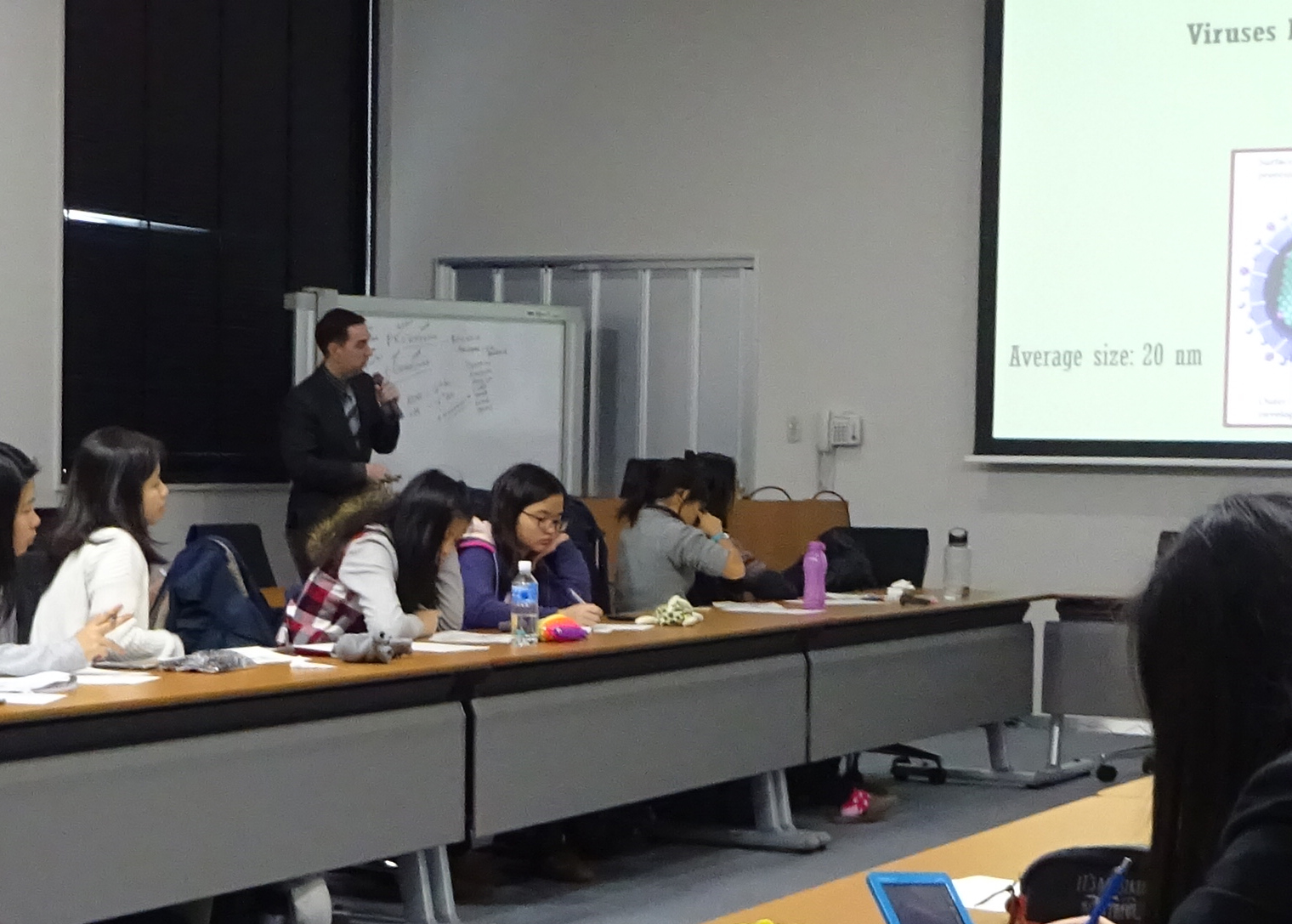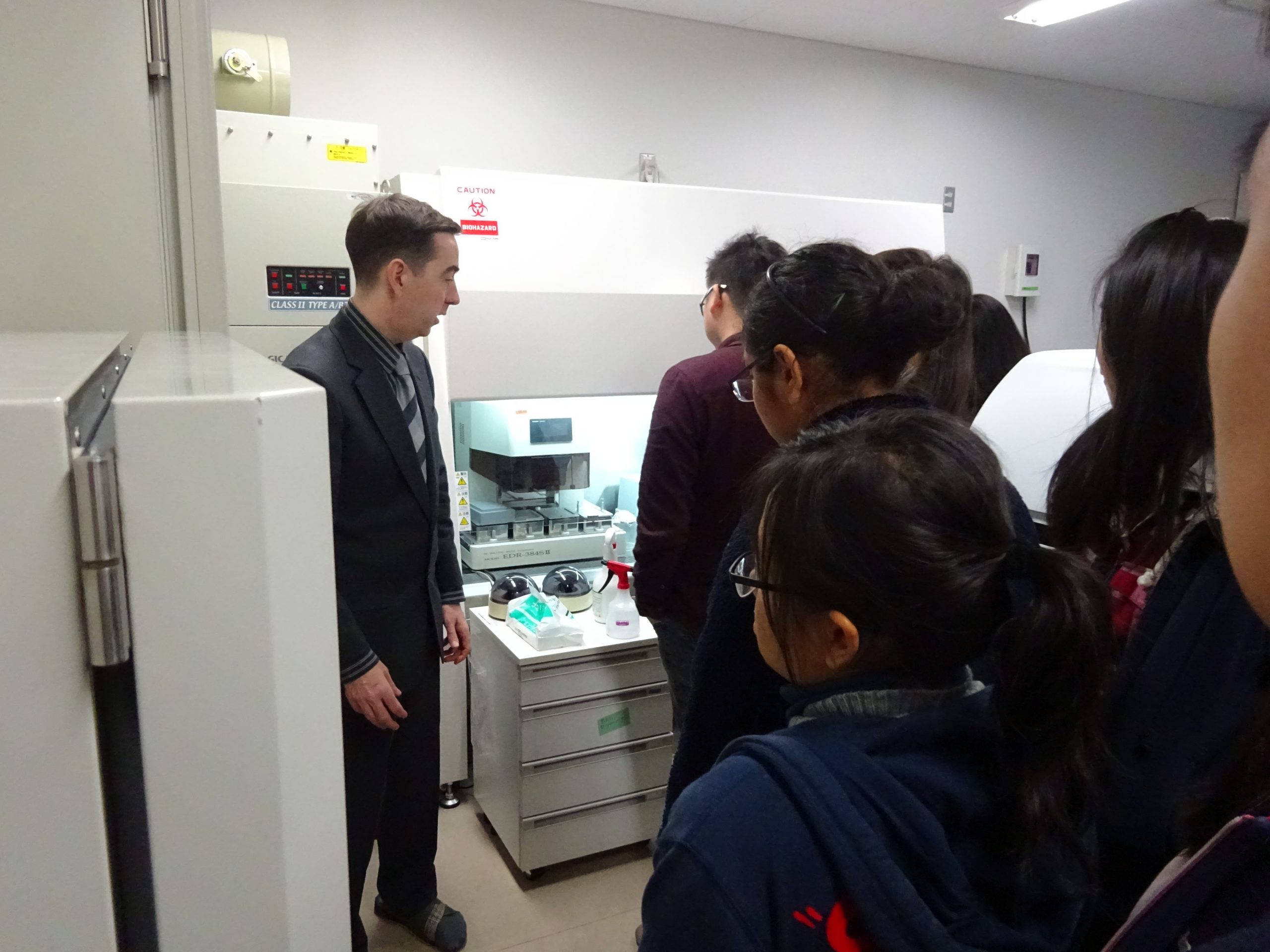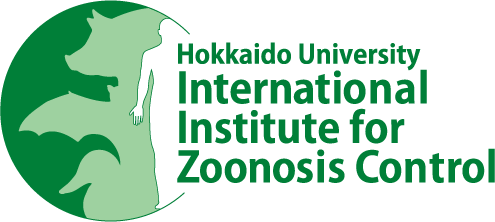December 01,2017
Lecture and Site Tour for High School Students
A lecture and site tour for high school students were given by Dr. Michael Carr at the Research Center for Zoonosis Control on December 1, 2017. They were attended by 12 Japanese students from Ritsumeikan Keisho Senior High School and 12 students from Singapore’s National Junior College.
Date: Friday, December 1, 2017
Venue: Conference Room, Research Center for Zoonosis Control, Hokkaido University
Lecture Topic: “What are viruses?”
Lecturer: Dr. Michael Carr, Global Station for Zoonosis Control, Global Institution for Collaborative Research and Education (GI-CoRE), Hokkaido University
Lecture summary (10-11 a.m.)
Basic aspects of viruses and biology were presented to the students with respect to:
- the concept of three domains of life on Earth: bacteria and multicellular organisms
- a definition for a virus as an obligate intracellular parasite and the concept that they can exist with either DNA or RNA genomes and be surrounded by a protein coat (a capsid) with or without an envelope
- the relative sizes of viruses (in nm) compared to bacteria and red cell cells (> µm) was illustrated in a series of diagrams
- it was explained that viruses have no nuclei, no organelles, no cytoplasm or cell membrane — i.e. are non-cellular
- viral shape was illustrated showing the either helical or isometric forms
- the replication cycle of a bacteriophage was shown to exemplify that a virus CANNOT reproduce by itself extracellularly—it must first infect a host cell and commandeer (“hijack”) the host cellular machinery, eventually causing destruction of the cell and killing it.
- Information flow in biological systems “DNA makes RNA makes Protein”
- A virus recognition of host cells by matching its surface marker with a receptor site on a host cell
- Basic steps of virus replication in more detail: attachment, uncoating, genome replication, assembly and release shown in a diagram.
- Important human viral diseases e.g. Ebola, rabies, polio etc.
- Virus transmission by respiratory, fecal-oral, blood-borne, sexual and vector mediated routes were explained to the students.
- Influenza was presented to exemplify viruses and Kida Sen-sei’s model of the viral particle showing surface proteins and the segmented genome in the cut away section shown to the students at the front of the class.
Site Tour 11-11.30 a.m.
Tour of general laboratory at the Research Center for Zoonosis Control showing sequencing capabilities and the entrance to P3 facilities were conducted. Students were encouraged to ask questions and interesting queries included asking what ultracentrifugation speeds were needed to pellet viruses versus bacteria and why and why did virus infected cells apparently have more nuclei.


Please see the advertisement in the Hokkaido Shimbun Press.
For details, please contact:
GI-CoRE Global Station for Zoonosis Control
TEL: +81-11-706-9555
Mail: gsz@oia.hokudai.ac.jp












